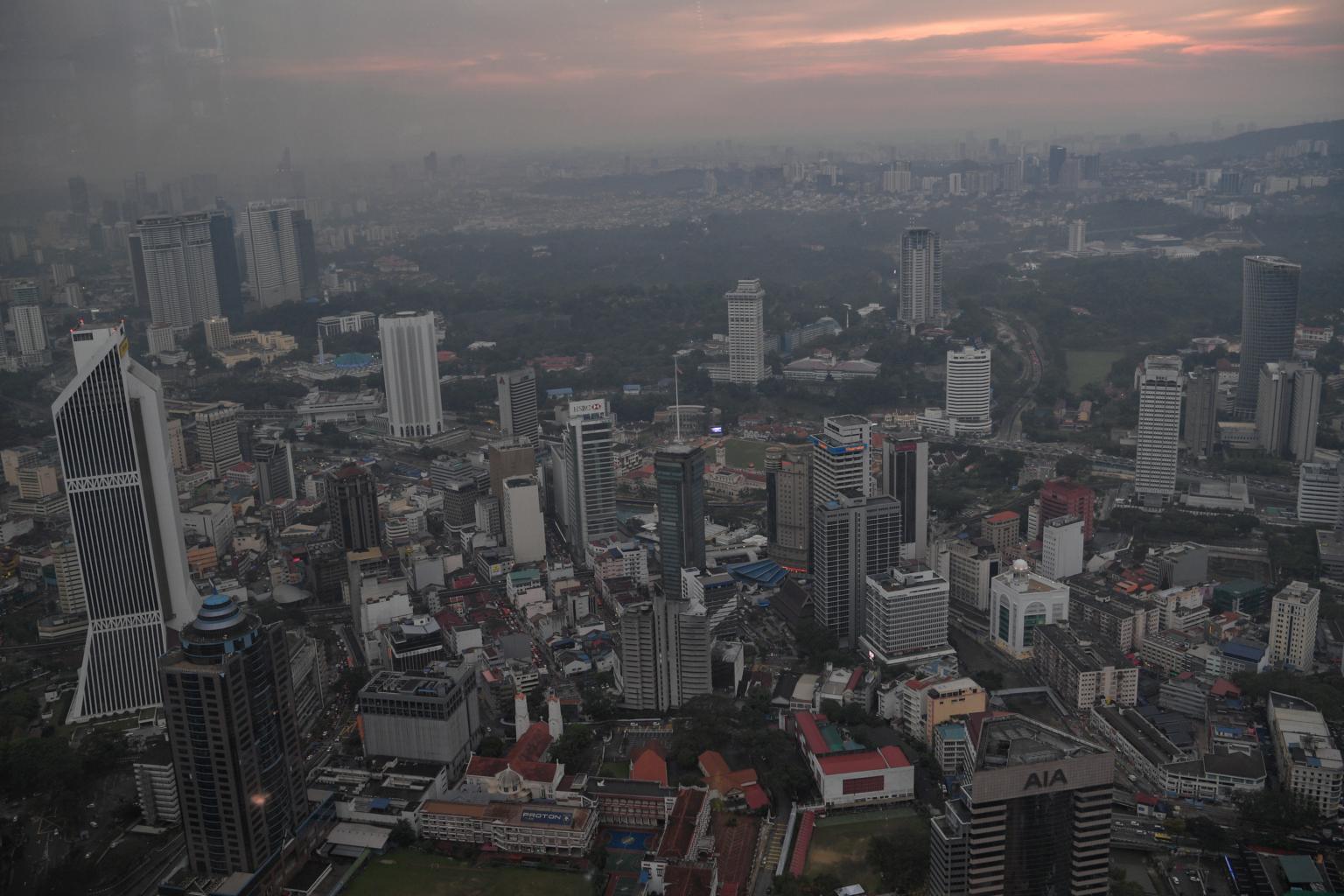Malaysia grapples with poverty and income levels as it reaches out to struggling families
Sign up now: Get insights on the biggest stories in Malaysia

The skyline of Kuala Lumpur on March 11. Cost of living is still topping voter grouses despite the change of government.
PHOTO: ST FILE
Follow topic:
KUALA LUMPUR - Ms Siti Aishah Abdul Rahim quit her job as an accounts clerk when she had the first of her three autistic children 25 years ago.
The 47-year-old Malaysian is also suffering from a recurrence of breast cancer, which was first diagnosed in 2008.
Living near Batu Arang, in the outskirts of Selangor, her 53-year-old husband travels 40 minutes on a motorbike to Malaysia's capital Kuala Lumpur where he earns RM5,000 (S$1,645) monthly as a technician.
But the government says their family does not qualify for Cost of Living Aid (BSH).
Originally a policy called 1Malaysia People's Aid (BR1M) under the Najib Razak administration for households earning RM4,000 per month or less, the scheme was continued but with reduced amounts for the same income bracket by Pakatan Harapan (PH) when it won power last year.
"After the first year of BR1M, my husband got a raise to RM4,100 and they told us we no longer qualify despite several appeals," Ms Siti told The Straits Times. "My children still need diapers and special care. How can we still be considered middle income when the only dates we go on are to have roti canai (prata) breakfasts?"
Families like Ms Siti's are struggling to make ends meet amid Malaysia's confusing stance towards welfare and poverty.
Cost of living is still topping voter grouses despite the change of government, with the government dishing out RM27.5 billion in welfare spending last year.
According to 2014 surveys, Malaysian households earning under RM3,852 monthly are grouped as the poorest 40 per cent, dubbed the B40 (the bottom 40 per cent).
Those in the middle 40 per cent are dubbed M40, and the top 20 are known as the T20.
Despite the B40 threshold increasing to RM4,360 in 2016, policymakers still round the figure down to RM4,000 when deciding on welfare programmes like BSH, and do not take into account expenditure factors such as size of household and localised cost of living.
While officials continue to aid those in the B40 group, Kuala Lumpur insists it has practically eradicated poverty from nearly half of the population in 1970 to just 0.4 per cent currently.
This is despite a United Nations Special Rapporteur on extreme poverty and human rights, Mr Philip Alston, claiming in August that up to 20 per cent of Malaysians are needy, as the poverty line income (PLI) was set far too low.
Malaysia sets a PLI of RM980, RM1,020, and RM1,180 for Peninsular Malaysia, Sarawak and Sabah respectively.
MIDDLE CLASS
Now, a newly released study by government think tank Khazanah Research Institute (KRI) appears to agree with the UN.
Having dived deep for two years into income and expenses across Malaysia, they have deduced that about 20 per cent of households need help to cover basic necessities, including some from the so-called M40.
Another 50 per cent are forced to make trade-offs in deciding how to optimise income for the family.
Only 30 per cent are truly "middle-class" and above, being able to afford a wide spectrum of discretionary leisure goods and services.
The study was based on 2014 statistics, as 2016 data was only available in late-2017 after the researchers began work.
Crucially, the think tank uses a concept called "equivalised income" which attempts to see how well off a household is based on its size and composition, as well as where it is located, which can affect both cost of living and quality of infrastructure such as public transport and amenities.
On average, Malaysian households need 63 per cent more money to maintain a similar standard of living per additional member.
For example, in Ms Siti's case, her "equivalised income" was RM1,254 based on the family's 2014 income, close to the RM1,196 average national marker for the neediest 20 per cent of Malaysians that KRI says should be the group targeted with direct cash and subsidies.
Her health problems and having three special needs children, as well as the fact her husband works in Kuala Lumpur, where living costs are high, should mean that based on localised data, her family should be well within the 20 per cent in the Klang Valley who need help.
POVERTY LINE
According to Prime Minister Mahathir Mohamad, the government has started reviewing the PLI and in the Mid-Term Review of the 11th Malaysia Plan (2016-2020) last year, there was an acknowledgement that about 15.5 per cent of "low-income" households above the poverty line needed assistance "to uplift their income, purchasing power and well-being".
"If we take the old poverty line, certainly there has been a drastic reduction in hardcore poverty. Now, we find that not only income determines whether one is poor but also all services, facilities and assistance provided to them," he told Parliament on Monday (Oct 7).
KRI researcher Gregory Ho says government policy must move away from a strict focus on income.
"The measure of well-being is less about a household's level of income... more about the diversity of things that wealth can buy," said the co-author of the study.
With the government's total subsidy and social assistance bill expected to come in at RM23.6 billion and RM24.2 billion for this and next year, there is a huge sum of money that could be better optimised.
This is especially true as PH struggles to contain over RM1.1 trillion in liabilities it says it inherited from the Najib government, while pondering fiscal policies ahead the tabling of Budget 2020 on Friday to weather a worsening economic storm next year due to the United States-China trade war.
The Straits Times understands that the Finance Ministry is pondering several initiatives such as unemployment benefits and incentives to hire young people and women.

